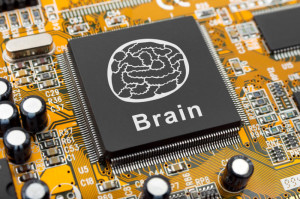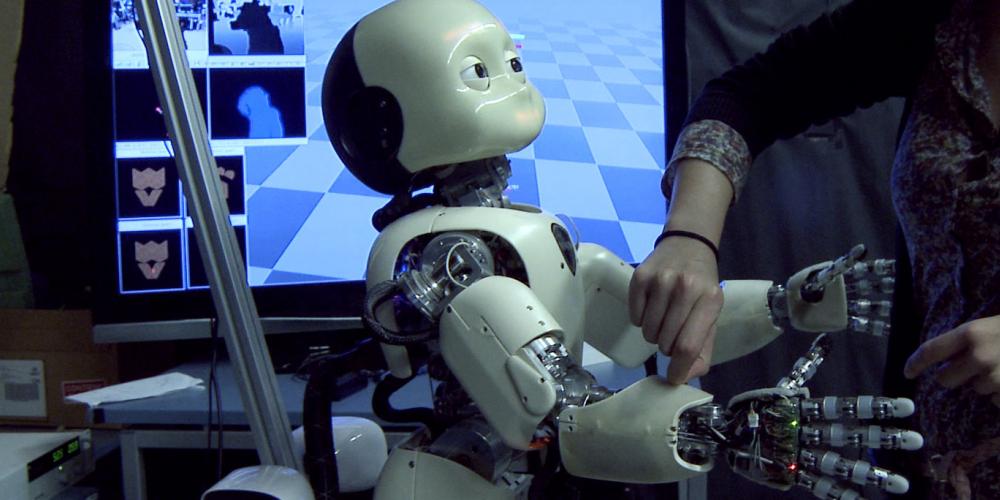Every year, Telluride, a small mountain town in Colorado, attracts an international roster of scientists from several disciplines for three weeks of intensive discussion and exchange of ideas about neuromorphic engineering, a rapidly expanding research field that promises to bridge the gap between the lifeless silicon of computer chips and the very much lively brain-based biological systems. This year is not an exception: the Telluride workshop is now in full swing and will continue until July 19.
Author Archives: Dmitry Malkov
What You Say Is What You Did
A new European project hopes to make robots more trustworthy
Year by year, robots become better and better at negotiating each time more complex social interactions with humans. However, much as their social intelligence has improved, these interactions still suffer from a lack of transparency. In other words, unlike humans, robots are not capable of understanding and explaining their actions in intentional terms, which prevents them from having more effective communication with humans. To the joy of robots and humans alike, this challenge is now addressed by the What You Say Is What You Did (WYSIWYD) project, launched earlier this year.
Living Machines 2014
The 3rd Conference on Biomimetic and Biohybrid Systems will be held this year from 30 July to 1 August in Milan. As has become a tradition, the three-day event, organised by the Convergent Science Network, will be hosted at a fantastic venue consistent with the spirit of the conference: the Da Vinci Museum of Science and Technology, one of the largest technology museums in Europe.
Is Pepper the world’s hottest personal robot yet?
Pepper, a new humanoid robot introduced earlier this month in Japan, may herald the beginning of a new era in personal robotics. Unlike its ancestors, such as Mitsubishi’s Wakamaru and Sony’s QRIO, who had to join the halls of robot extinction, Pepper, developed jointly by the French robotics company Aldebaran and the Japanese telecom giant SoftBank, is here to stay.
Seeing in 3D
From early stereoscopic images to 3D screens and holograms, people have always been fascinated by the possibility of enhancing our visual perception and bridging the gap between various two-dimensional representations of the world and its actual three-dimensionality.
Sadly, despite recent developments in 3D technology, the digital world is still under the domination of 2D. On top of it, the divide between 2D and 3D appears to be bigger than ever as digital platforms continue to gain importance in how we interact with the world. Incorporating the digital world of ideas into the fabric of reality remains the next logical step that could give the word vision a whole new dimension.
Robot suit gets people out of the wheelchair
Having spent almost ten years in a wheelchair after a car crash left her paralysed below the chest, Sophie Morgan was finally able to stand on her feet and walk again. What got her out of the wheelchair was not some kind of groundbreaking therapy, but a robotic exoskeleton developed by the New Zealand-based company Rex Bionics.
Continue reading
Robot with a sense of humour is no joke
Neuroprosthetics: wearable tech inside the brain
Wiring electronic devices directly into your brain may not sound like a very pleasant idea, but this is exactly what so many scientists around the world seem to be quite excited about. The reason is that, far from being your worst cyborg nightmare, brain implants – also called neuroprostheses – can do true miracles. Connected to the nervous system, these little chips can make the blind see, the deaf hear and even allow the paralysed to once again gain control over the physical world.
How to make your brains feel at home

Spacemaker VR is an Oculus-based virtual reality system that allows designers to walk through their designs
Source: Digital Physical
The physical spaces we inhabit have a direct influence on how we feel, think and behave. Understanding this implicit dialogue between built environments and our minds continues to open new ways for architects to design physical spaces that better meet people’s needs. Neuro-architecture, interactive architecture, intelligent environments and virtual reality technology are among those exciting and partially overlapping disciplines that are currently on the frontline of the ongoing architectural revolution.
Virtual reality labs reshape how we process information
We live in a time when the scale of scientific research is undergoing an unprecedented exponential growth, which contributes to the generation of equally unprecedented amounts of data. Disciplines like neuroscience, astronomy or particle physics are piling up so much information that finding and implementing new ways of representing, navigating and manipulating this information is rapidly becoming a pressing necessity.








